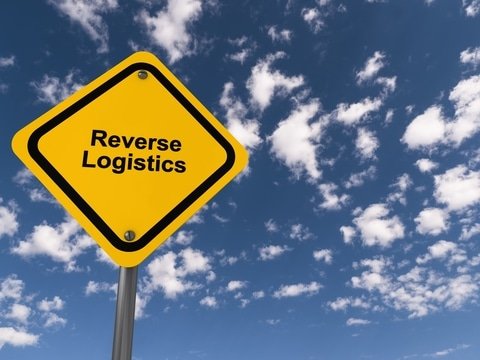Reverse logistics has a problem. Starting with the word “reverse.”
Think of your automobile. You shift your vehicle’s transmission to move forward or go in reverse. In that case, reverse is simply the opposite of forward.
Not so for reverse logistics. Supply chain operations that use the six mega-processes of PLAN, BUY, MAKE, MOVE, STORE, and SELL to get product into the hands of your end customer are not the exact opposite of the processes necessary for reverse logistics.
Your forward logistics omnichannel, what I call unichannel, means customers can buy anywhere and deliver anywhere. They can shop in stores, buy online and pick it up at the store, buy online and have it delivered to their home, office, anywhere.
A reverse logistics omnichannel would offer consumers the same options. For the most part, that doesn’t happen. But it should. Your customers should be able to return items to a store, via UPS, via FedEx, via the U.S. Postal Service – a true omnichannel reverse logistics approach. This might even require partnering with organizations you normally view as competitors.
Amazon and Kohl’s Show How Partnerships Work
The Amazon-Kohl’s partnership is a perfect example.
Seemingly, the e-tailer and retailer compete against each other for the same consumer dollar. Kohl’s wants traffic in its stores – without traffic, no sales. Amazon wants apparel shopping easier to lower the barrier – lots of folks won’t buy apparel online if they face big hassles returning items that didn’t match the color on screen, didn’t fit right, or arrived damaged.
As detailed in my latest book, Insightful Leadership: Riding the Waves to Organizational Excellence, Amazon directs its customers to traipse to Kohl’s, where they can hand the item in for a return and be done with it. That drives traffic to the store, which helps Kohl’s generate sales.
Returns are big business – and becoming bigger. As Logistics Management reported in its recent article “Transportation Trends and Best Practices: Many happy returns,” the value of overstocked goods and returns in supply chains has doubled since 2008. Zac Rogers, assistant professor of supply chain Management at Colorado State University, expects returns to continue growing at 6% a year. Grandview Research, on the other hand, expects the $840.7 billion global reverse logistics market to grow at a compound annual growth rate (CAGR) of 12.4% from now until 2028.
Many in the retail field treat returns with disdain. They think adding a returns center and a liquidation center handles everything. Amazon, instead, offers customers true omnichannel returns, not reverse logistics. A solid return policy means great customer service, a great value add. Customers remember – and return to do business with you.
Reverse Logistics Can Give 3PLs Competitive Advantage
Likewise with 3PLs and others in the logistics business. Those not offering their clients reverse omnichannel options are missing out on increased revenue per returned unit (2-5X more revenue than fulfillment) and more margin on each shipping label.
Now is the perfect time to make sure your operations are ready for the onslaught of returns coming in January. Now is the time to make returns as simple as shopping.
Related Reading
- Raw Materials: The Start of Your End-to-End Supply Chain
- The China Decoupling Might Hit Before You Are Ready
- How 5Ls Make a Western Hemisphere Logistics Hub
- Global Supply Chains at Risk – Again
Jim Tompkins, Chairman and founder of Tompkins Ventures and Tompkins Solutions, is an international authority on designing and implementing end-to-end supply chains. Over five decades, he has designed countless industrial facilities and supply chain solutions, enhancing the growth of numerous companies. Jim earned his B.S., M.S. and Ph.D. in Industrial Engineering from Purdue University.

